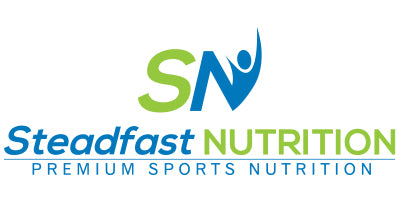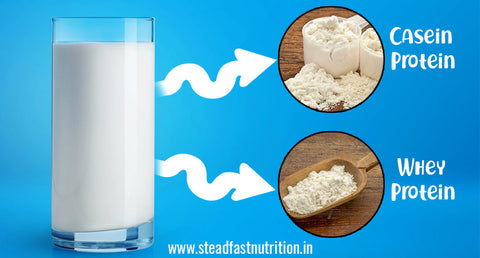Milk is a good source of proteins in the human diet. It contains a good amount of proteins which helps in maintaining muscle health. They are a source of nitrogen and amino acids which are required to maintain the various body functions. They have various specific functional and nutritional applications. It is also known as complete protein as it contains all the essential amino acids which are essential for the growth, muscle protein synthesis, repairing of damaged muscle fibres, the formation of hormones etc. Moreover, milk is also a copious source of phospholipids which plays an important role in the synthesis of the cell membrane.
(“Outlines of dairy technology”2015) says that proteins are most complex organic substances among other macromolecules. Apart from bodybuilding, proteins also provide calories. Consumption of 1g protein gives 4kcal energy to the body. They constitute a crucial part of an individual’s body cells so are vital for all living organisms. RDA for protein varies with age, gender and physical activity of a person. It might increase for strength athletes and might decrease in case of kidney related disorders.
They comprise a large number of amino acids, some ‘essential’ and rest ‘non -essential’.
Essential amino acids are not synthesised in our body so they have to be taken from outside, their deficiency in the body leads to improper development and lose the efficiency to build the muscles. On hydrolysis, they furnish amino acid mixture. The milk protein is mainly made up 80%of casein and 20% of whey proteins.
Casein is only present in milk and is found in the form of a calcium caseinate-phosphate complex. It is present in the colloidal form. It contributes to 8% of the total milk protein in milk. It can be precipitated by acid, rennet, alcohol, heat and concentration. Casein exists in three forms:
Alpha-casein
Beta- casein
Kappa-casein
(Isolation of casein, lactose and albumin from milk” 2000) says that casein in milk is found in the form of calcium salt and calcium caseinate. It has a complex structure. This salt is composed of α, β, and κ caseins which form a micelle, or a solubilized unit. α and β form of casein are not soluble in water, individually or in combination. When κ casein is added to either one or to a mixture of two, however, the result is a casein complex that is soluble owing to the formation of the micelle. So this form is thought to stabilise the micelle. α and β form are precipitated by calcium ion as they are phosphoproteins.
Whey proteins consist of beta-lactoglobulin and alpha-lactalbumin. (“Whey protein Components”) mentioned that beta-lactoglobulin is the most abundant whey protein, forms approximately 50-55% whey protein. It serves as an excellent source of the essential and branched chain amino acids (BCAAs) which prevent muscle breakdown and extra glycogen during exercise. Alpha-lactalbumin is the second most abundant whey protein component, forms approximately 20-25% of whey protein. It is a rich source of tryptophan, an essential amino acid which is beneficial for an increased serotonin production, sleep regulation and as a mood elevator. It is the major protein found in human milk as well. Whey protein concentrates made from milk had greater foaming properties than those produced from whey.
QUALITY OF MILK PROTEIN
Proteins vary in composition, indispensable amino acid profiles and physicochemical properties of the food matrix in which they are embedded. And their quality refers to the ability of a food protein to meet the metabolic demand of an individual body for nitrogen and amino acid. It differs with the age, health status, energy intake and physical activity of an individual. Apart from composition, physiological criteria such as digestibility and bioavailability are necessary for describing protein quality.
Protein digestibility is defined as the process of breakdown of protein to release amino acids.
Bioavailability of an amino acid refers to the proportion of consumed protein that is absorbed in a chemical form for it to be used by an individual. This can be affected by food processing or by anti-nutritional factors, as well as the interaction between these compounds and processing.
There are various methods to assess the quality of proteins. These include nitrogen balance, biological value profiling, protein efficiency ratio, net protein utilisation, amino acid score. Later it includes the so-called protein digestibility corrected amino acid score (PDCAAS). They are recommended by the WHO/FAO/UNU in spite of some limitations.
Dock rule of PDCAAS states that the biological value may not exceed 100%.
Extraction method:
(“Separation, extraction and fractionation of milk components” 1984) says that
SEPARATION OF WHOLE MILK PROTEINS:
Whole proteins of milk are extracted from other milk components with 2 techniques:
Precipitation of casein and whey proteins under the triple action of a high heat treatment, pH lowering, and calcium chloride addition Selective retention of protein components by ultrafiltration, microfiltration diafiltration.
SEPARATION OF CASEINS AND WHEY PROTEINS:

(“Isolation of casein, lactose and albumin from milk” 2000) says that due to the higher content of carbohydrates and fewer phosphate groups κ casein protein thought to have all its serine and threonine residues (which have hydroxyl groups), as well as its bound carbohydrates, on only one side of its external surfaces. This outer surface portion is easily soluble in water due to the presence of polar groups. The further remaining portion of its surface binds well to the water-insoluble α and β caseins and solubilizes them by forming a protective colloid or micelle around them. Because of the outer surface of the micelles is solubilised in water then the unit as a whole is solubilized, thus bringing the α and β caseins, as well as κ casein, into solution.
The isoelectric point of calcium caseinate is pH 4.6. So, it is insoluble in solutions of pH less than 4.6. The pH of milk is near to 6.6; therefore casein has a negative charge at this pH and is solubilised as a salt. By adding acid to milk, the negative charges on the outer surface of the micelle are neutralized (the phosphate groups are protonated) and the neutral protein precipitates.
The calcium ions remain in the solution. When milk sours, lactic acid is produced by bacterial action and the resultant lowering of the pH causes some clotting reaction.
The casein in milk can also be precipitated by the action of an enzyme called rennin. Rennin is present in the stomach of young calves. However, both the nature of the precipitate and the mechanism of precipitation differ when rennin is used. The precipitate formed using rennin, calcium paracaseinate, contains calcium.
As renin is a hydrolytic enzyme (peptidase), it acts specifically to cleave peptide bonds between phenylalanine and methionine residues. It acts on the κ casein, breaking the peptide chain so as to release a small segment of it. It dismantles the water-solubilizing surface of the κ casein, which protects the inner α and β caseins and causes the entire micelle to precipitate as calcium paracaseinate. Milk could be decalcified by treatment with oxalate ion, which forms an insoluble calcium salt. In absence of calcium ion in milk, a precipitate will not be formed when the milk is treated with rennin.
The precipitate or curd formed by the action of renin is sold commercially as cottage cheese. The remaining liquid is called whey. The curd part is used in making various types of cheese. After precipitation, it is washed, pressed to remove extra whey, and chopped. After these steps, it is melted, hardened and ground. Then this is salted, pressed into moulds and set aside to age.
Albumins are globular proteins which are soluble in water and in dilute salt solutions and can be denatured and coagulated by heat. Lactalbumin is the second abundant protein in milk. After casein removal, the solution becomes acidic, the lactalbumin can be isolated by heating the mixture to precipitate them.
In milk, the third type of protein is called lactoglobulin. They are present in less amount in milk as compare to albumins. They are denatured and precipitated under the same conditions as the albumins.
Other methods include Fractionation using Ultrafiltration (UF), Microfiltration(MF) and Diafiltration(DF).
(“Food Processing and technology- principles and practices” 2002) says that Ultrafiltration membranes are used in commercial application to concentrate milk in dairy industries. It has high porosity and retains only large molecules (e.g. colloids or proteins) which have a lower osmotic pressure. Smaller solutes are transported through the membrane with water. So, it operates at lower pressure. It is used to concentrate whey to 20% solids or selectively to remove lactose and salts. It also has an advantage in producing a higher yield product in cheese manufacture.
“Milk protein fractionation symposium” CHARGED ULTRAFILTRATION MEMBRANE FOR WHEY PROTEIN FRACTIONATION:
UF is mostly used to concentrate proteins, but fractionation of one protein from another is much less common. By Etzel et al., a positively charged membrane is used to increase the selectivity of ultrafiltration and allow the fractionation from the cheese whey.
By making the UF membrane positively charged and adjusting the pH, it was possible to permeate proteins having little or no charge, such as glycomacropeptide, and retain proteins having a positive charge. Putting a charge on the membrane increased the selectivity by over 600% compared to using an uncharged membrane
(“Food Processing and technology- principles and practices” 2002) says that there is an extension to UF, in which water is added back to the extract during the concentration process is known as diafiltration. This is helpful in selective removal of lower molecular weight material from a mixture.
(“Food Processing and technology- principles and practices” 2002) says that Microfiltration (MF) is alike to UF in using lower pressure than reverse osmosis, but is distinguished by the larger range of particle sizes that are separated. UF is used to separate macromolecules and MF is used to separate dispersed particles.
Miscellaneous Methods:
ION EXCHANGE
“What is whey protein how it is made?” says that this method is used to concentrate and purify whey protein (especially used to make isolate protein). (“Food Processing and technology- principles and practices” 2002) says that it is a separation method that removes electrically charged ions and molecules from liquids. In this method, proteins are transferred from a feed material and retained on a solid ion-exchange material by a process of electrostatic adsorption. And these can be separated by washing off the ion exchanger. Ion exchanger can be an anion exchanger or a cation exchanger, constructed by using a porous matrix made up of polyacrylamide, polystyrene, dextran or silica. This technique is used for protein recovery.
ELECTRODIALYSIS:
“Food Processing and technology- principles and practices” (2002) says that it is used to separate electrolytes from non-electrolytes and to exchange ions between solutions. Also used in a solution for ion exchange. A direct current is moved through a solution and molecules or charged particles drift due to their electrical charge towards an anode or a cathode. Separation is done by ion selective membrane (sheets of positive and negative exchange) and acts as a barrier to oppositely charged ions. So negatively charged particles (anion) drift towards the anode passing through anion membranes but rejected by positive (cation) membranes and vice versa. The membranes form ion-diluting cells and ion concentrating cells by alternate arrangements. Ion diluting cells are used in cheese whey circulation and ion concentrating cells are used in brine. Mineral ion depart from the whey and become concentrated in the brine, therefore demineralising the whey is important in infant feeds.
References:
https://hal.archives-ouvertes.fr/
http://www.rediscoverdairy.co.za/
Fellow P J (2002), Food Processing Technology- Principles and Practices, @nd Edition. Woodhead Publishing Ltd
De Su Kumar, Milk and milk products technology.

